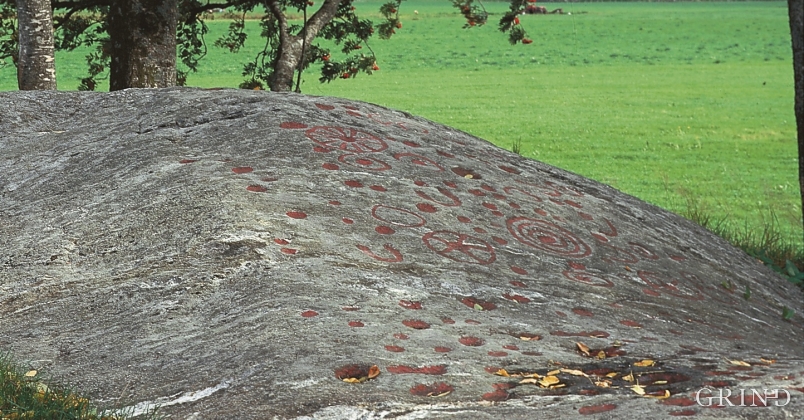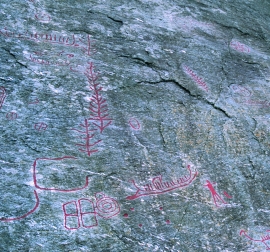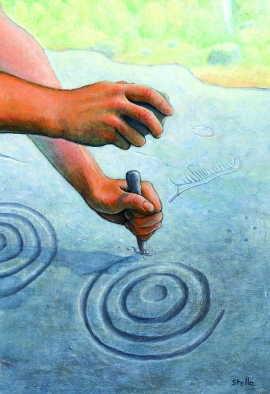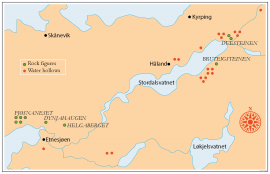Published: 08.01.2013 | Author: Svein Indrelid
Rock inscriptions at Helgaberget. (Svein Nord).
Helgaberget – the holy hill – is a little rocky crag which thrusts itself a few metres above the terraced surface of Støle. The surface of the rock is strewn with figures inscribed in the rock and it was, as far as one can judge, a cult centre in the Bronze Ages. The name could indicate that the tradition of holiness can have lasted for almost 3,000 years.
The rock inscriptions at Helgaberget belong to the farmers’ culture and are of the type that we call agricultural inscriptions. It is ring figures and rock depressions which dominate on the rock surfaces at Helgaberget. There are no figures of ships here, which are otherwise so common amongst agricultural inscriptions in Hordaland, and in Etne. Nor do we find drawings of footprints, human beings or animals. We have no clear knowledge of what the reason is for these differences in the choice of subjects.
At Helgaberget it is the rock depressions which dominate: round, small saucer or cauldron shaped hollows, from 3-4 to 10 centimetres in diameter. At least 270 have been identified to date. In addition there are some which are thought to belong to the ring figure symbols.
Here there are 23 ring figures of different types. Some of them have spokes as in a wheel, others are carved out as several concentric circles within each other, with a rock depression in the middle. Here there are also about 20 oval or U-shaped figures.
Helgaberget is situated in the middle of an unusually rich - in terms of western Norway - area of finds from the Bronze Age. Here there have been several burial mounds, and some few hundred metres north east of the inscriptions, a costly bronze necklace was found.
Bruteigsteinen
The Etne rural district is rich in historical monuments. There are grave mounds, fortified refuges from the Dark Ages and rock inscriptions. The tree is an unusual subject for a rock inscription, but we can find it on the Bruteig Stone - a particularly rich and varied area of inscriptions. The rock carvings have been dated back to the Bronze Age. (Egil Korsnes)







